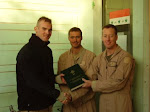“There is a popular misconception that early Christianity was aniconic (that is, it was opposed to the use of images). This could not be further from the truth. In this thread, we will take a deep dive into early Christian iconography.
“In the Book of Numbers, God commands Moses to make a serpent of bronze and to lift it up before the Israelites "that every one that looketh upon it, shall live." (Numbers 21:9). Jesus explicitly cites this symbol as a prefigurement of the crucifixion (John 3:14)
“In the book of Genesis, man is made according to the "image" (icon) of God (Gen 1:26). Saint Methodius of Olympus (d. 311), an ancient Church Father, comments: "As, then, we must here honour all the images of a king, on account of the form which is in them, so also it is …
“… incredible that we who are the images of God should be altogether destroyed as being without honour." (Fragments on Jonah) This shows the great respect early Christians had for the human figure.
“The great theologian Dionysius the Areopagite (1st c.), the disciple of Saint Paul, writes that material symbols are absolutely *necessary* to elevate man to a contemplation of the immaterial and divine realities (Celestial Hierarchy 1.3).
“With this background, let us now examine the archaeological evidence. The oldest church in existence, the house church of Dura Europos in Syria (233 AD), depicts miracle scenes from the Gospel, such as the healing of the lame man and Christ walking on water.
“We find similar scenes in the later catacombs. Here we see the Samaritan woman at the well, the healing of the woman with the effusion of blood, and the raising of Lazarus. (Source: Catecombs of Via Latina, Marcellinus and Peter, Callixtus, 3rd to 4th centuries)
“Old Testament figures, such as Jacob, Samson, and Daniel, are also depicted.
“Already at this early stage, individual saints have recognizable features, suggesting that the images were painted from life. For instance, St. Peter appears with a round face and white hair while St. Paul has a receding hairline, elongated Judaic features, and a pointed beard.
“The earliest icon of the Virgin Mary is found at the Catacomb of Priscilla (3rd century)
“The saints depicted in icons frequently assume the orans pose, i.e. praying with arms outstretched to heaven. This indicates their anagogical function, that is, helping to lead viewers up to God.
“When the Christians emerged from the catacombs, they brought their iconography with them. Here are some equisite 4th-century examples from Santa Pudenziana and Santa Costanza in Rome. As one can see, there was no radical shift in the post-Constantinian period.”
From an excellent thread on X by Scriptorium Press @ScriptoriumP copied in part here for those who for understandable reasons do not use Twitter/X.





































No comments:
Post a Comment